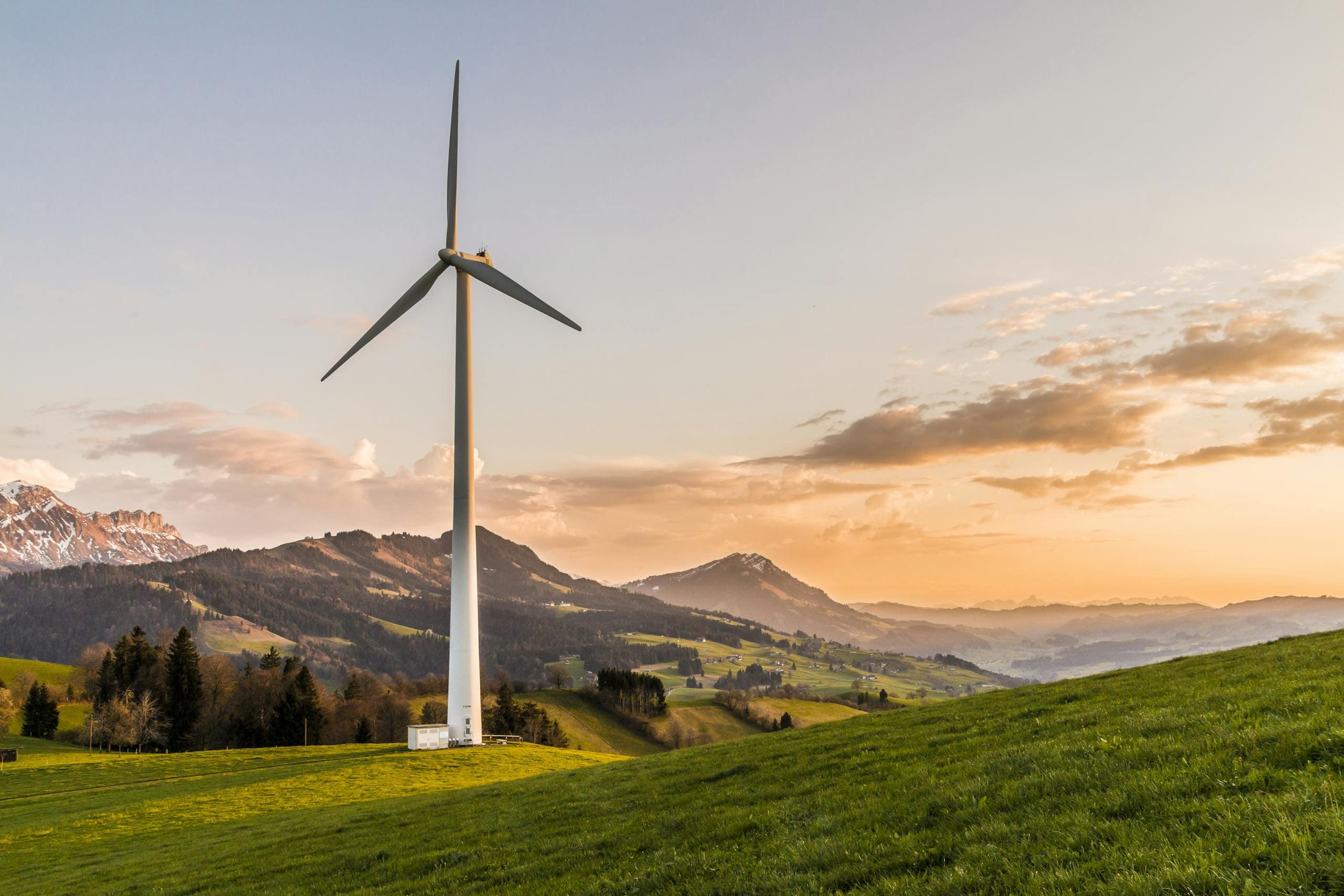How to Transform Your Energy Efficiency with AI Renewable Energy
Did you know that by 2023, AI serves over 50 uses in the energy sector, with a market worth up to $13 billion? This incredible growth showcases the immense potential of AI renewable energy, which is changing the way I think about energy efficiency. This is more than just a technological advancement; it’s a revolution that could redefine how we generate, manage, and consume energy. The rising demand for electricity and the drive for decarbonization are making the energy sector more complex. And AI is stepping up, not just to meet this complexity but to manage it with smarter, more efficient solutions.
As someone keen on improving energy efficiency, I’m excited about AI energy optimization, which is revolutionizing how we integrate smart grids and manage electricity demands. AI is already making waves with its ability to forecast renewable energy sources like wind and solar, helping balance supply and demand, and optimizing storage. The insights AI offers allow better prediction of power output and smarter, more reliable decision-making in energy management. It’s like having a sophisticated tool that helps reduce inefficiencies and improve performance significantly.
If you’re interested in transforming your energy efficiency, this exploration into AI’s role in the energy sector is crucial. Discover how these innovations can benefit our environment and economy. Dive into the full article to see how AI is the key to navigating our energy future effectively.

Photo provided by Google DeepMind on Pexels
In the article
- Leveraging AI renewable energy for Efficiency
- AI in Smart Grid and Energy Management
- AI-Driven Predictive Maintenance
- Renewable Energy Integration with AI
Leveraging AI Renewable Energy for Efficiency
Understanding AI energy optimization
When I think about how AI optimizes energy, it’s amazing how it can manage both use and distribution so effectively. You see, AI helps in understanding electricity flows and predicting where energy is most needed at any given time. This means that power isn’t wasted when it doesn’t have to be. For example, AI can analyze real time conditions and adjust energy supply just in time to meet demand peaks, which helps both the energy provider and the consumer.
Moreover, AI is key in enhancing forecasting and resource allocation for energy production. By analyzing historical and real time data, AI can fine-tune predictions about energy supply and demand, which helps energy companies plan better and avoid overproduction. This optimization results in cost savings and contributes to the overall efficiency of the power supply process. AI energy efficiency means using resources wisely while ensuring that consumers still get the reliable energy they need.
AI solar power and wind energy advancements
In the world of renewable energy, AI has been a game-changer, especially for solar and wind power. When I look at how AI improves solar power generation forecasts, I am impressed by its ability to predict energy production with high accuracy. This is crucial because it helps manage the variability of solar energy, ensuring that solar farms operate more efficiently. AI tools can predict sunshine hours and adjust energy collection strategies, which increases the overall output of solar panels.
AI also enhances AI wind energy efficiency by about 20%. This is achieved by optimizing wind turbine operations through constant analysis of weather conditions and turbine performance. AI systems can schedule maintenance, monitor turbine health, and adjust blade angles for maximum power generation. This leads to better performance and prolongs the life of wind turbines, which is both an economic and environmental win.

AI in Smart Grid and Energy Management
Implementing AI smart grid solutions
What strikes me most about AI is how it helps manage multi-directional electricity flows in smart grids. A smart grid isn’t just a one-way street where electricity flows from producer to consumer. Instead, it requires complex coordination, and AI plays a crucial role by integrating various devices and handling complex electricity flows. This enables better control of the grid, which is essential for distributing power more reliably and efficiently.
AI integrates devices such as smart meters and sensors, providing comprehensive grid control. By enabling these integrations, AI ensures that the grid can respond to changes in power demand quickly and effectively. This not only helps prevent outages but also maintains a steady supply of power, even when demand spikes unexpectedly. Additionally, this integration supports a greener approach by facilitating the incorporation of more renewable energy sources into the grid.
Enhancing energy storage and consumption
One of the most practical applications of AI in energy management is optimizing energy storage and supply balancing. AI can predict energy needs, allowing for better allocation of stored energy during peak times. This means that energy can be conserved when demand is low and released when it is high, ensuring that the grid remains stable and efficient.
Through predicting power needs, AI drastically improves the way we manage consumption. By analyzing patterns and using AI energy consumption data, energy providers can tailor supply according to specific times and seasons. This results in reduced energy waste and helps consumers save on costs. It also means the infrastructure for energy storage can be used more effectively, maximizing the return on investment for energy companies.

Photo provided by HASAN ZAHRA on Pexels
AI-Driven Predictive Maintenance
Preventing grid failures with AI
When it comes to maintaining energy systems, AI is incredibly effective in anticipating equipment failures. Predictive maintenance powered by AI can significantly reduce downtime and costs by identifying potential issues before they occur. I find it fascinating how AI uses data from sensors to predict when a component might fail, allowing for proactive repairs.
This capability is vital for preventing grid failures and maintaining reliability across the energy network. By reducing the occurrence of unexpected breakdowns, AI supports consistent electricity supply, which is crucial for homes and businesses. Moreover, it reduces the environmental impact by ensuring that energy systems operate smoothly without unnecessary disruptions or emissions.
AI energy management in practice
In practice, using AI in energy management means reducing outages and enhancing reliability. Energy firms are always looking for ways to improve their operations, and AI offers cost-effective solutions for doing so. By optimizing processes AI energy management reduces waste and increases efficiency, ultimately leading to better service for consumers.
Many companies are investing in AI to help cut costs and improve efficiency. AI systems can analyze data to find inefficiencies, suggesting improvements that reduce operational expenses. This enables energy providers to offer more competitive prices and better services to their customers, making AI an invaluable tool in the energy industry.

Renewable Energy Integration with AI
AI power distribution strategies
What I find most intriguing about AI in power distribution is its ability to optimize strategies for a consistent energy supply. AI supports a seamless balance of energy loads across the grid, ensuring that power is distributed efficiently between producers and consumers. This results in less energy waste and more consistent AI power distribution, which is essential for maintaining a stable energy supply.
By analyzing vast amounts of data, AI helps utilities forecast demand more accurately, scheduling energy generation and distribution accordingly. This means resources are used where needed most, preventing overproduction and minimizing costs. It’s a significant step toward a more efficient and sustainable energy system.
AI energy sector challenges
However, when I consider the challenges AI faces in the energy sector, data security and a shortage of skilled workers are major concerns. As AI systems become more embedded in energy operations, ensuring the security of data they handle becomes critical. Protecting against cyber threats is essential to maintain trust and safety in AI-driven processes.
Another challenge lies in recruiting enough skilled professionals to manage and develop AI systems. The demand for expertise in AI renewable energy is growing as companies strive to implement these technologies effectively. Addressing these challenges is crucial for AI’s future role in transforming the energy sector and achieving sustainable energy goals.
Wrapping Up Your Energy Transformation
I’ve explored how leveraging advanced technologies can significantly transform energy efficiency across various sectors. Using smart systems tailored to power management means you can enhance equipment performance, streamline maintenance, and even predict future energy requirements with precision. By adopting such innovative solutions, you can achieve substantial cost savings and contribute to a more sustainable environment.
To take the next step, I suggest looking into tools and platforms that offer real-time energy data analysis. This will enable you to optimize your energy use effectively, ensuring power distribution systems are not only more efficient but also more reliable. Reach out to energy service providers or tech companies to explore customized solutions that align with your energy goals.
Finally, don’t hesitate to share these insights with others who might benefit from embracing these technologies. Whether it’s through social media, a community group, or a professional network, spreading the word can encourage a broader shift towards efficiency and sustainability in the energy sector. Let’s work together towards a cleaner and smarter energy future.






